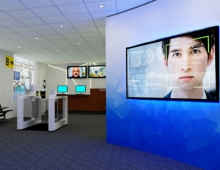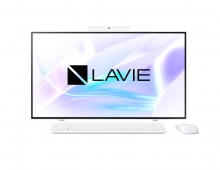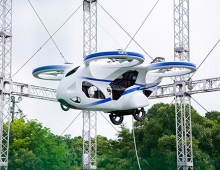
NEC Develops Walkthrough Identity Verification System Using Iris Authentication Engine
NEC Corporation has developed iris recognition technology capable of highly accurate identity verification of people as they walk past.
This makes it possible to implement "walkthrough" ticket gates and security gates that can verify people's identities on the fly without them having to stand still.
Iris recognition is a technique that involves examining tiny patterns in the human iris, which are unique to each individual. In order to do this, it is first necessary to capture highly detailed iris images. Therefore, iris authentication typically requires that the user remains still at a prescribed location in front of a camera, which is then adjusted to the position of the user's eyes. This is a troublesome process, and there have been calls for a more convenient solution.
NEC's technology is capable of obtaining clear high-resolution iris images from people as they walk past. The company says it has accelerated the image processing performed on these images after they have been captured, making it possible to perform the entire identity verification process while a user is walking past.
NEC has already developed Bio-IDiom, a suite of six biometric authentication technologies: iris recognition, face recognition, fingerprint/palm recognition, finger vein recognition, voice recognition, and ear acoustic authentication. These have been incorporated into over 1,000 systems in about 70 countries and territories around the world. In particular, NEC's iris recognition technology is used in applications such as immigration control and national ID services. In iris recognition accuracy evaluation tests performed by the U.S. National Institute of Standards and Technology (NIST), which is a global authority in this field, NEC's technology was found to achieve the best matching accuracy.
By combining this iris recognition technology with the newly developed imaging technology, NEC has made it possible to perform walkthrough identity verification instead of requiring people to stand still.
In the future, NEC expects that this technology will be used in a wide range of fields, such as security authentication in airports and other large-scale facilities, and identity verification at ticket gates for trains and buses.
The company aims to have this technology in practical use by FY2021.
Technical features
To obtain high-resolution iris images from people walking at normal speed, NEC's technology accurately estimates the position of the eye's region of interest (ROI). The ROI is estimated by considering the range of vertical movement of the head that occurs while walking. If only images in the ROI are captured when a person passes through an iris imaging location, then the amount of image data that has to be processed can be greatly reduced. This makes it possible to capture images with high resolution and at high frame rates, which has previously been difficult to achieve.
NEC's image analysis technology uses a proprietary image quality index to extract high-quality images suitable for iris authentication from a large number of images taken at a high frame rate. This allows iris authentication to be performed on the fly because it is only necessary to analyze the images extracted by this technique, instead of analyzing all the captured images.





















